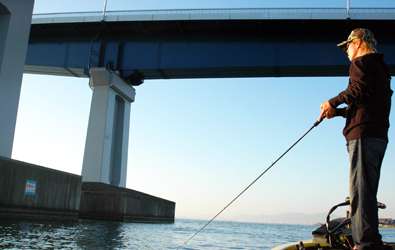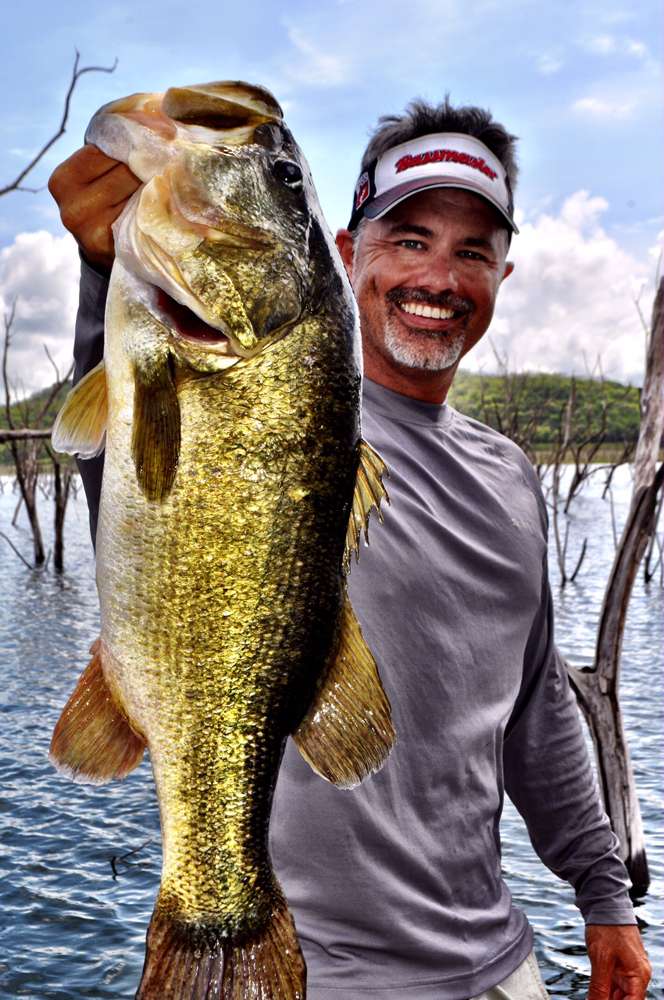
Manabu Kurita told me the truth today about how, when and where he caught the pending world record bass. Every detail. How do I know it's the truth? I know because Mr. Kurita doesn't care if his fish is certified as a world record or not.
Shy and unassuming, the 33-year-old Kasugai native became hooked on bass fishing 18 years ago.
"I saw a photo of a largemouth bass in a magazine and I was very impressed with how it looked. So, I tried fishing for bass and I became passionate about catching them," Kurita explained.
Kurita's passion takes him to the lake more than 150 times a year. According to his estimations — and those close to him consider the estimates conservative — Kurita annually catches more than 100 bass greater than 8 pounds.
On July 2, 2009, he landed his biggest fish ever (although not the biggest he has hooked). The 22-pound, 5-ounce behemoth ate a live sunfish he had rigged on a 5/0 Fina Power Finesse bait hook.
"I had noticed this big fish swimming around the bridge piling, and I was pretty sure she would eat a bluegill. So, about 11:30 a.m., I went to the bridge piling and cast the bait to the north side. I twitched it a couple of times and the big bass ate it. It was my first cast," Kurita explained.
Kurita showed me the exact spot on the bridge, made the exact cast and explained how surprised he was once he landed the fish.
"I knew it was big, but I did not think it was that big," he admitted.
The IGFA has not yet certified Kurita's catch as a world record because of a rule that states a record fish cannot come from a sanctuary or no-fishing zone. The remaining question has been about whether the three marked bridge pilings where he was rumored to have caught the fish are no-fishing zones, and, if they are, was Kurita actually fishing near these three pilings? (The other bridge pilings are not marked, so fishing, anchoring and tying to them is totally legal.)
When I asked Kurita to take me to the exact spot where he caught the bass. He did not hesitate. We drove directly to one of the three marked pilings, confirming the rumors that he caught the fish in an area that was marked: "Do not stop." He could just as easily have taken me to another bridge support, one that would have completely negated the naysayers.
His honesty was refreshing. His motives seemed pure.
However, this supported those who questioned the legality of his catch. Does the "Do not stop" sign suggest, and thereby give authorities, the ability to ticket anglers fishing the marked pilings?
This determination is left to the local police and, ultimately, the Japanese Game Fish Association and the International Game Fish Association.
After my meeting with Kurita, I met with Yoichiro Oguri, president and owner of Popeye, a very popular tackle store chain (Japan's version of Bass Pro Shops). Mr. Oguri is a very well-connected and respected icon in the Japanese fishing industry. During our conversation, I asked if he had a contact within the JGFA, and, if so, could he find out the status of the Kurita world record application.
Mr. Oguri contacted JGFA and found out the delay was because of the fact that they were unsure of the local laws surrounding Biwa's no-fishing zones. Mr. Oguri then contacted the Shiga-Ken Police Department (enforcers of Lake Biwa laws). He asked them if fishing was allowed near the three marked bridge pilings. The answer was "yes." It is illegal to anchor or tie to the bridge pilings, but fishing next to or around them is completely legal.
Kurita broke no laws in the catching of the 22-5.
Mr. Oguri then contacted the chairman of the JGFA and informed him of his findings.
Moments later, the JGFA gave Kurita's catch the thumbs up and sent a letter of support to the IGFA. As of this writing, the IGFA has not yet commented on the status of the record. However, it seems all concerns about the legality of this catch have been answered. It is likely Mr. Kurita's bass will be recognized as the biggest largemouth ever caught.
And if for some reason the IGFA still does not recognize Kurita's accomplishment?
"That's OK," Kurita replied with a shy grin. "I think I might be able to catch a bigger one next year."

